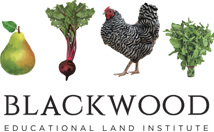By Hans Hansen
As an organic grower for nearly 3 decades, if I had to point to one topic of knowledge where organics started to work for me in a practical way it’s when I began to fully grasp the nature and power of soil. More specifically, organics began to work for me when I began to make important distinctions between adequate and great soil. If the grower gets the individual soil parts right and into alignment, chooses the appropriate plants and varieties, an organic approach will not only fall into place it will perform far better than a conventional approach. I have seen this over and over in my own and other’s experience. The hitch is getting a clear conceptual and working understanding of soil parts and having the patience to carry that understanding through.
The paradox is that the culture of good soil is powerful in its simplicity yet has so many important overlapping components. It mirrors the simple yet powerful elegance of an ecosystem because it is one. As with understanding an ecosystem, it’s useful to tease apart key components and look at them to appreciate their individual nature and contribution to the whole soil ecological system. Complex and confusing it can be in the beginning, once a grower reaches a certain threshold of understanding of key parts, a practical dynamic understanding falls into place.
To illustrate the lessons of our mini-workshop on soil pH, I’ll share the experience of one of our participants as an example case. I requested that participants bring a sample of soil from their garden for pH testing and discussion. Horticulturist Susan Giocalone brought a soil sample from her Magnolia garden. The garden is about 3 years old. Susan is a knowledgeable gardener and has done much to improve the soil in her garden since she began her garden, from scratch. Great soil generally takes years to build. Susan’s garden was in a good place after 3 years, and was due for a soil check-in.
We matched her soil pH with the preference range of the rugosa roses (6.0 -7.0) the sample was collected near. In sum, the soil looked good (a sandy loam – you could see darkness associated with humus, and a soil gaining in organic matter content from a couple years of adding compost. Though her soil looked good by most gardener’s standards, the pH was a bit high (above 7) for optimum phosphorus and micronutrient assimilation. Susan said her roses “looked good” but suffered from a tinge of chlorosis (mild leaf yellowing), bacterial spot and mildew issues (common in these parts).
Trace minerals and good soil flora are important to plant health / resistance to disease and for producing the best looking roses as well as dark green foliage (iron). Optimum phosphorus assimilation will assist with root and flower bud / bloom development. We then consulted charts for sulfur application needed to bring Susan’s soil to optimum pH range for roses and other plants in her garden (vegetables, grasses and most ornamentals prefer a slightly acidic pH between 5.8 – 6.5; 6.5 is a great target for a diverse garden)
A good soil test is an invaluable reference point, but then one must be able to make sense of it to take garden and pasture soil to the next level.
Soil tests can be a bit daunting to behold on first glance , then one needs to devise a good plan of action followed the first few steps. It’s more fun, informative and supportive in a participative / hands-on group setting.
Most organic gardeners / biological oriented growers already have done many good things to their plot or land. It’s good to get a pat on the back for the extra hard work that organic gardeners put in. Now that so much hard work has put in, it’s time to stride into the mastery glide, for the slam-dunk!
In a few weeks we’ll construct a custom blended organic fertilizer from a soil test. We’ll do the calculations together, figure out the amount of fertilizer blend to apply per area / bed, then blend it. This will be a good opportunity to bring your soil test to the the presentation for a bit of “crowd” support / advising. If you haven’t tested your soil yet, it’s a good time to do so. I’ll keep you posted on the date.
Texas Plant and Soil Lab – TPSL Soil Test is recommended.
https://www.
If you are interested in a comprehensive soil workshop, I will be offering a more on onOctober 24th in Houston. Bring your soil test, this will be the focus of this workshop. Link goes here.
